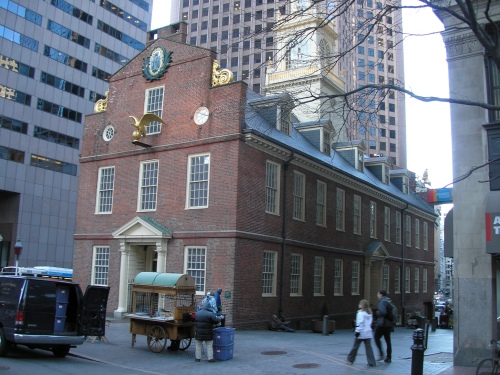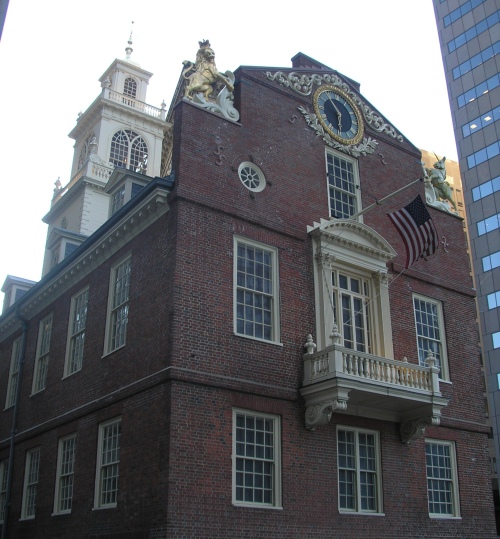Old State House (1713)

Since the 1630s, what would become the site of the Old State House in Boston was where the Puritans’ stocks and whipping posts were located and where the town’s earliest market was held. A wood Town House was built there in 1657, which had an open air market on the ground floor and a meeting place above. After this structure burned down in 1711, a new brick one was built in 1713, although the interior was gutted by fire in 1747 and had to be restored afterwards. This historic structure at the head of State Street, which became the seat of British Royal government in Massachusetts, was the site of many significant events: James Otis‘ speech against the writs of assistance in 1761; the March 5, 1770 Boston Massacre, which occurred just in front of the building; the first reading for Bostonians of the Declaration of Independence by Col. Thomas Crafts from the east balcony on July 18, 1776 (at which time the people torn down from the building the original royal lion and unicorn to be consigned to a bonfire); and the 1789 visit of President George Washington. After the Revolutionary War, it continued to serve as the State House until 1798, when it was given to the town in exchange for a new State House site on Beacon Hill. In 1830, it was altered by architect Isaiah Rogers in the Classical Revival style to serve as a City Hall until 1841. After that, it began a long decline. Housing offices and shops, the exterior was covered with advertisements. There were thoughts of demolishing it to widen the street and Chicagoans even offered to move it to Illinois! In 1882, it was eventually restored (with replicas of the old lion and unicorn) and rededicated as a museum, run by the Bostonian Society. A more recent restoration was completed by Goody, Clancy & Associates in 1991. The building is part of the Boston Freedom Trail. See below for more pictures of the Old State House:

